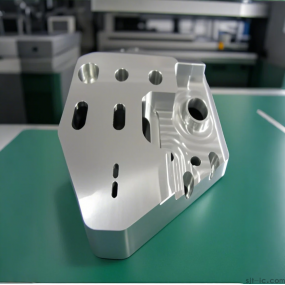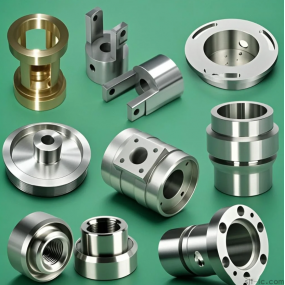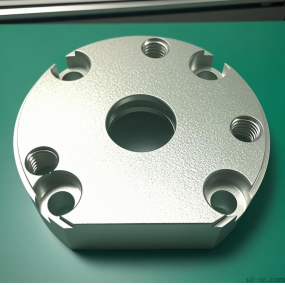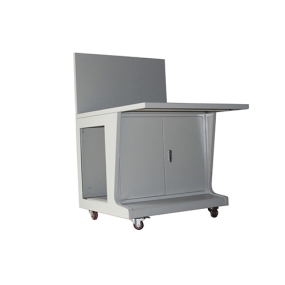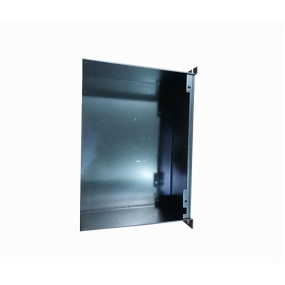The process of CNC lathe machining is similar to that of ordinary lathes, but due to the fact that CNC lathes are one-time clamping and continuous automatic machining completes all turning processes, the following aspects should be noted:
1. Reasonably choose cutting parameters
The reasonable selection of cutting parameters (ap, f, v) plays an important role in fully utilizing the potential of machine tools and cutting performance of cutting tools, achieving high-quality, high-yield, low-cost, and safe operation.
When rough cutting, first consider selecting a maximum back cutting amount ap, then choose a larger feed rate f, and finally determine a suitable cutting speed v. Increasing the back cutting amount ap can reduce the number of cutting times, and increasing the feed rate f is beneficial for chip breaking. Therefore, selecting the rough cutting amount based on the above principles is beneficial for improving production efficiency, reducing tool consumption, and lowering processing costs.
During precision machining, high precision and surface roughness are required, and the machining allowance is small and uniform. Therefore, when selecting cutting parameters for precision machining, emphasis should be placed on ensuring machining quality and maximizing productivity on this basis. Therefore, during precision machining, a smaller (but not too small) back cutting amount ap and feed rate f should be selected, and cutting tool materials with high cutting performance and reasonable geometric parameters should be chosen to maximize the cutting speed v.
2. Reasonably choose cutting tools
1) When rough cutting, it is necessary to choose cutting tools with high strength and good durability to meet the requirements of large back cutting and feed rates during rough cutting;
2) When precision machining, it is important to choose tools with high precision and good durability to ensure the required machining accuracy.;
3) To reduce tool changing time and facilitate tool alignment, machine clamped knives and machine clamped blades should be used as much as possible.
3. Reasonably choose fixtures
1) Try to use universal fixtures to clamp workpieces and avoid using specialized fixtures;
2) Align the positioning benchmarks of the parts to reduce positioning errors.
4. Determine the processing route
The machining route refers to the motion trajectory and direction of the tool relative to the part during the machining process of the CNC machine tool
1) Should be able to ensure machining accuracy and surface roughness requirements;
2) Efforts should be made to shorten the machining route and reduce the tool idle time.
5. The relationship between machining route and machining allowance
At present, in the absence of widespread use of CNC lathes, excessive allowance on the blank, especially the allowance containing forged or cast hard skin layers, should generally be arranged for processing on ordinary lathes. If it is necessary to use a CNC lathe for machining, attention should be paid to the flexible arrangement of the program.
6. Key points for fixture installation
At present, the connection between the hydraulic chuck and the hydraulic clamping cylinder is achieved through a pull rod. The key points for clamping the hydraulic chuck are as follows: first, use a handle to remove the nut on the hydraulic cylinder, remove the pull tube, and extract it from the rear end of the spindle. Then, use a handle to remove the chuck fixing screw to remove the chuck.


 Spanish
Spanish Arabic
Arabic French
French Portuguese
Portuguese Belarusian
Belarusian Japanese
Japanese Russian
Russian Malay
Malay Icelandic
Icelandic Bulgarian
Bulgarian Azerbaijani
Azerbaijani Estonian
Estonian Irish
Irish Polish
Polish Persian
Persian Boolean
Boolean Danish
Danish German
German Filipino
Filipino Finnish
Finnish Korean
Korean Dutch
Dutch Galician
Galician Catalan
Catalan Czech
Czech Croatian
Croatian Latin
Latin Latvian
Latvian Romanian
Romanian Maltese
Maltese Macedonian
Macedonian Norwegian
Norwegian Swedish
Swedish Serbian
Serbian Slovak
Slovak Slovenian
Slovenian Swahili
Swahili Thai
Thai Turkish
Turkish Welsh
Welsh Urdu
Urdu Ukrainian
Ukrainian Greek
Greek Hungarian
Hungarian Italian
Italian Yiddish
Yiddish Indonesian
Indonesian Vietnamese
Vietnamese Haitian Creole
Haitian Creole Spanish Basque
Spanish Basque

